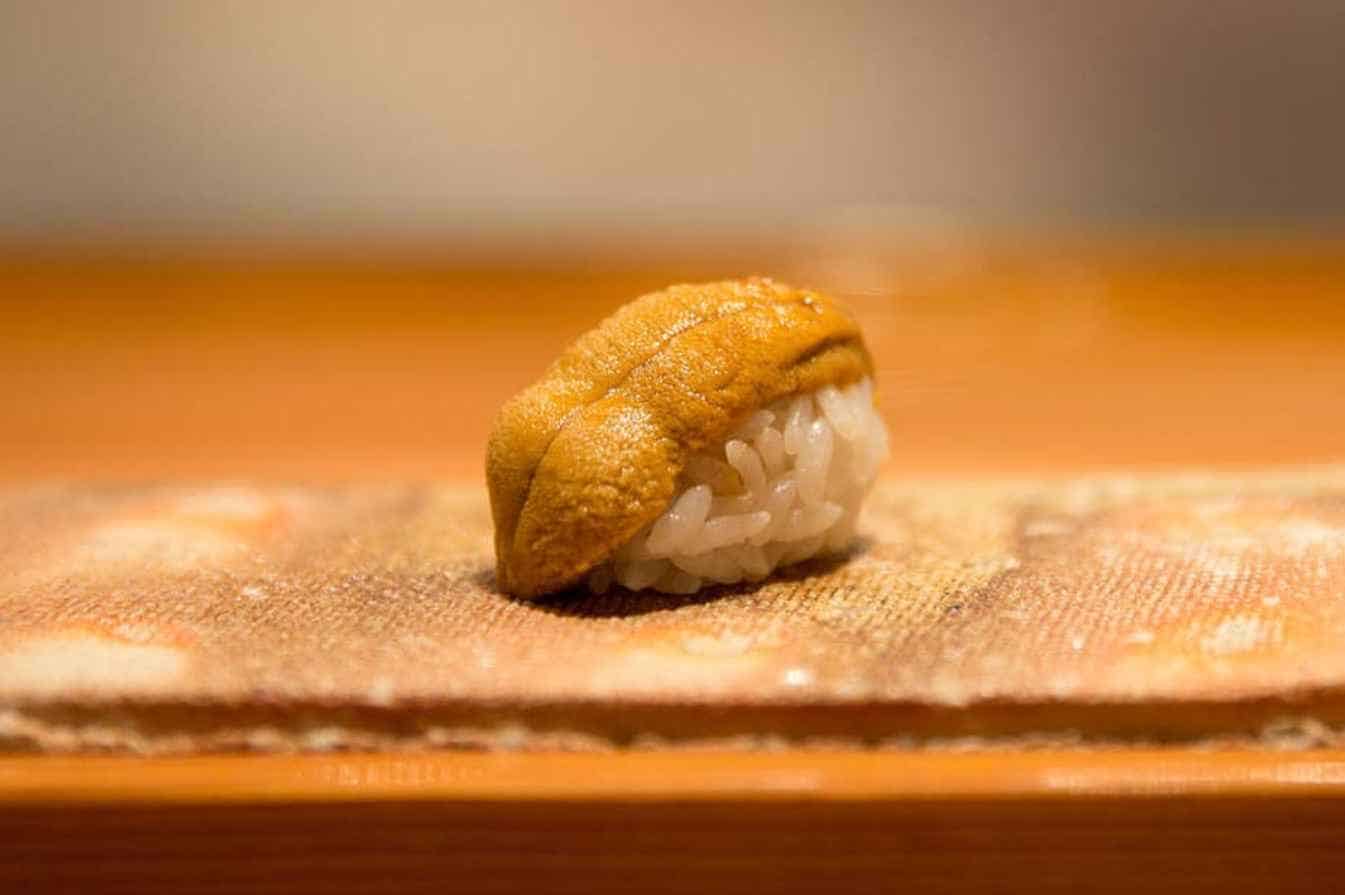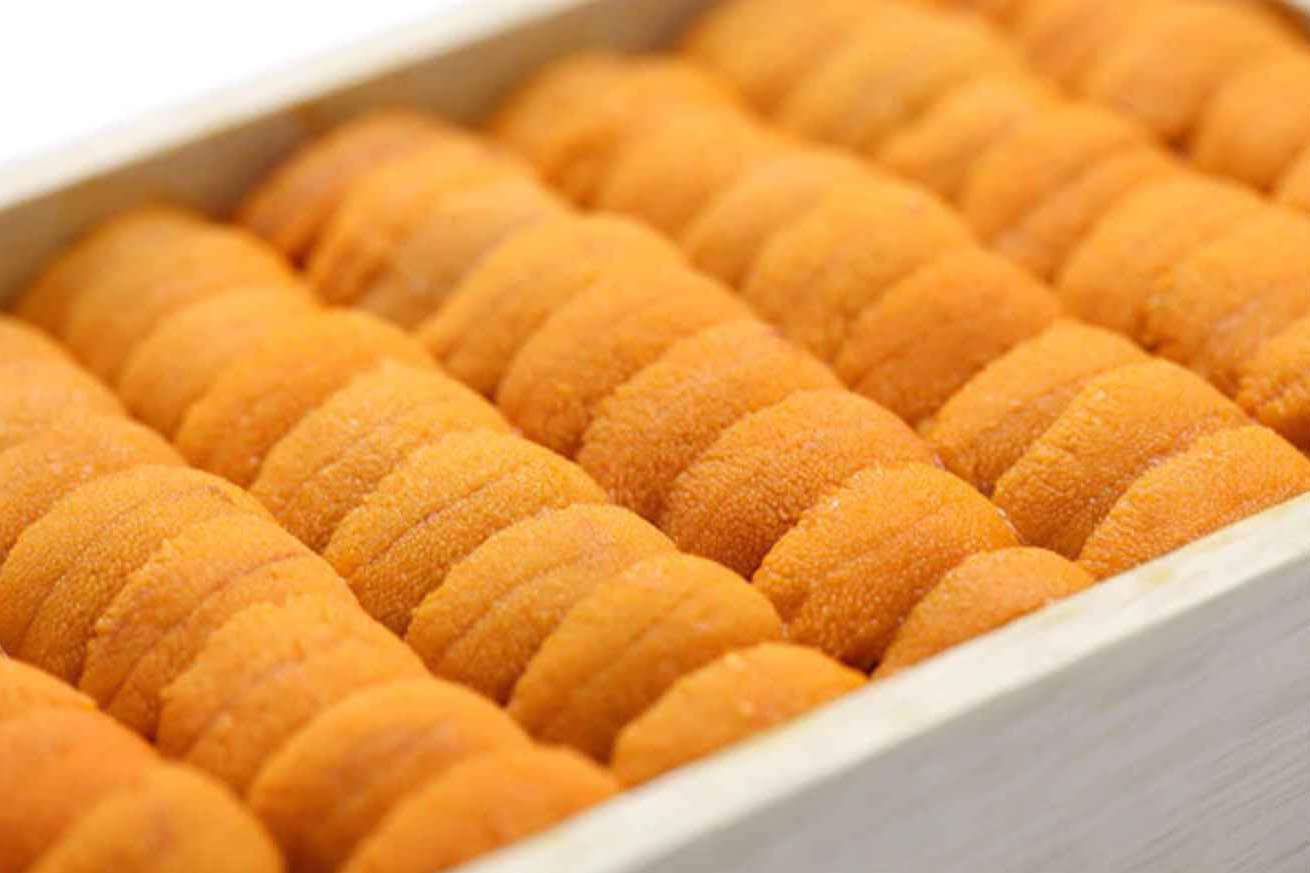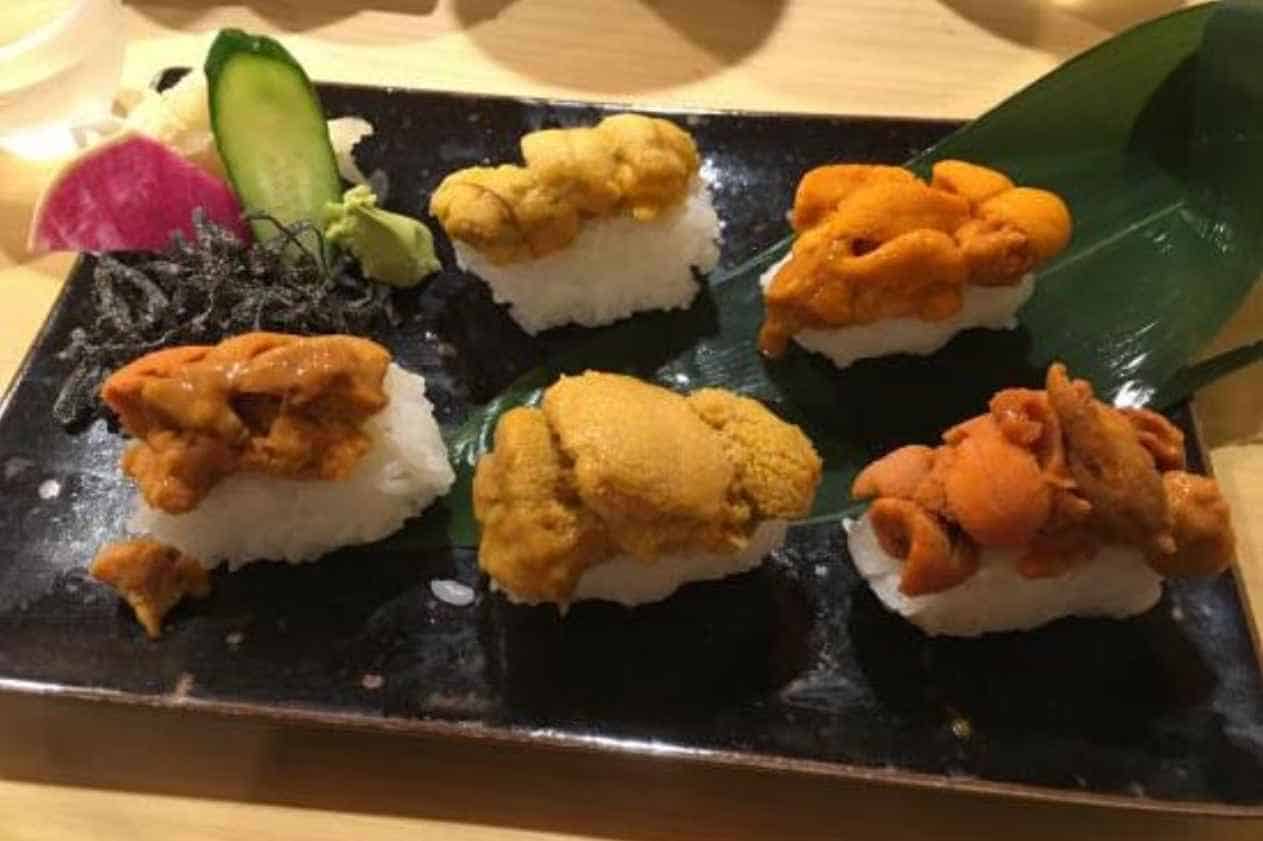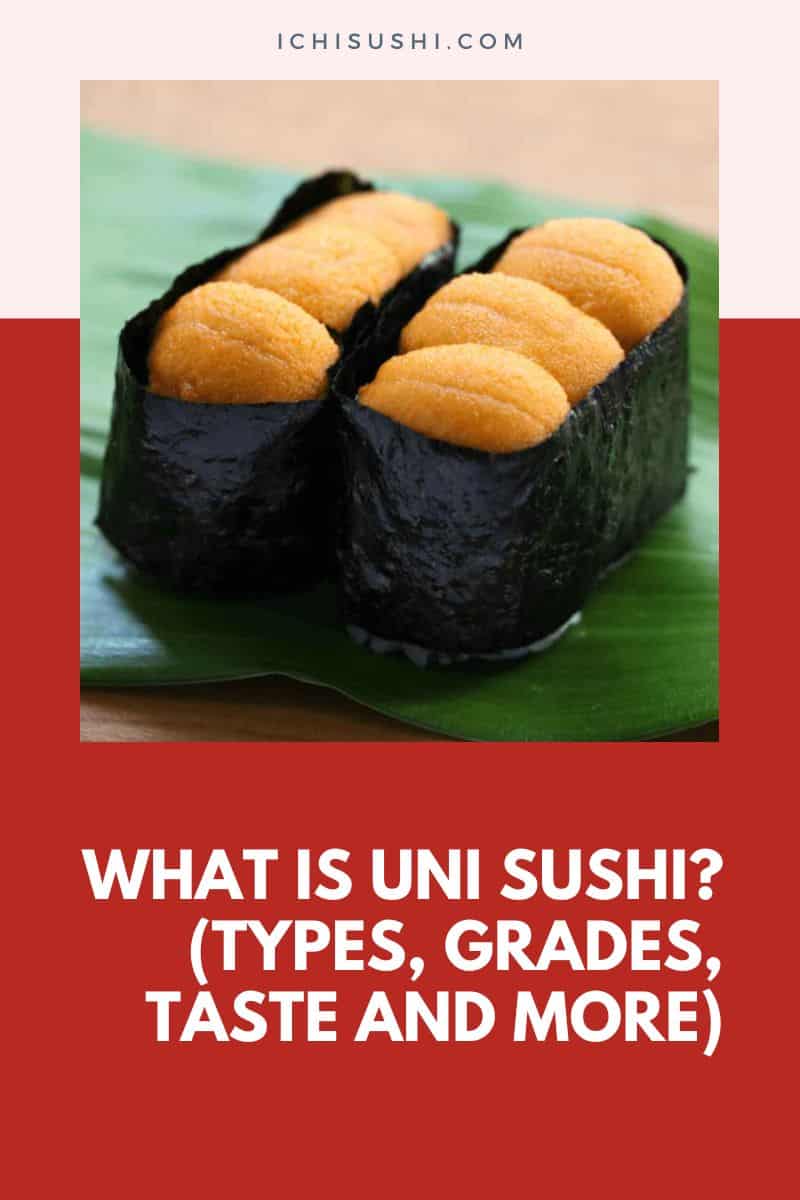Even among enthusiasts, some just don’t know much about uni sushi. As many say, it’s an acquired taste. But, if you’re interested in this sweet and briny Japanese delicacy, let us introduce you to what is uni sushi.
What is Uni Sushi?
Uni sushi contains the edible part of a sea urchin. Although many confuse this delicacy as the roe of a sea urchin, it’s actually its gonad.
You might have already seen Uni sushi if you are a sushi fan. It’s characterized by an elongated shape and yellow to golden color.
Although Uni can be steamed or lightly cooked, most sea urchin sushi is served raw. In Japan, many sushi places even open up and serve their sea urchin in front of you!
Many lists this sushi as a must-try, especially since it’s one of the most well-known delicacies from Japan. That said, it can be hard to find reputable Uni sushi, especially within the USA.
Why is Uni Sushi Pricey?
If you want to try some premium Uni sushi, you might be surprised about the price of this Japanese dish! A kilo of Uni can range from $120 to over $500, a quite high price, especially if you want to try some high-standard varieties.
And, as its demand goes higher, the number of sea urchins on the sea also decreased these past few years. But, their rarity is not just the only factor of their priciness. Uni sushi can be quite a pain to make well, so many sushi makers need proper training for it.
The live shellfish needs to be carefully handled when collecting it, or else the meat will become very fragile and damaged beyond saleable use. Keeping sea urchins alive as long as possible is vital when using them as an ingredient.
Each sea urchin includes five sections or ‘lobes.’ Carefully, the sushi maker will extract these quite fragile gonads for serving.
A Brief History of Uni Sushi
Although its famous worldwide today, Uni sushi has its roots in Japan. You can trace its origin back to the Edo period when the Samurai class is the only one consuming it.
However, it’s part of the Japanese sushi culture that didn’t happen until the 20th century. Back then, sea urchin harvests were plentiful, so it was used as a filling for sushi rather than the nigiri topping we know today.
Then, it has become increasingly popular as the sole ingredient for a nigiri. Today, it’s one of the most popular types of sushi in the world!
Different Grades of Uni Sushi
Uni, or sea urchin, is typically graded for quality based on appearance factors such as color, texture, and freshness. The said variables are primarily used to determine these three grades:
- Grade A: If you’re looking for fantastic taste and presentation, the highest Uni grade is Grade A. It has a bright yellow-gold color and a firm texture that’s subtly sweet. You won’t find anything better than Grade A Uni for its flavor, texture, color, and sweetness. It’s often the type commonly used for Uni nigiri.
- Grade B: Grade B has a more subdued color than Grade A —think of a softer, muted yellow. It is also less sweet and has a lesser firm texture. The taste is nicely sweet, although not as strong as Grade A, but it’s still enjoyable. Many don’t tend to enjoy this type of Uni on its own, but it’s better with other elements.
- Grade C: The part of the sea urchin left behind after processing is called ‘vana.’ It isn’t generally consumed as-is, but adding it to different dishes can add incredible flavor with a unique umami taste.
Experience the highest quality and cuisine sensation with the freshest Uni from a live sea urchin, which comes at the highest-grade price. That said, Uni is still available fresh (nama uni), frozen (reito uni), steamed (mushi uni), and salted (shio uni), but mostly the latter is only accessible for lower grades.
Different Types of Uni in Sushi
Although there are more than 900 species of Uni worldwide, only 180 of that is available in Japan. And around five are the most common to be served, such as:
| Type of Sea Urchin | Region | Spawning Months |
| Purple Sea Urchin (Murasaki Uni) | Throughout Japan (Mainly the Pacific) | May to August |
| Green Sea Urchin (Bafun Uni) | Tohoku to Kyushu | March to April |
| Short-spined Sea Urchin (Ezobafun Uni) | Tohoku to Hokkaido | July to October |
| North Sea Urchin (Kitamurasaki Uni) | Hokkaido to Toyama | September to January |
| Red Sea Urchin (Aka Uni) | Throughout Japan (Mainly the Pacific) | October to November |
Depending on where you get your sea urchin, it can have different sizes and flavors. If you’re eating your Uni sushi in Japan, it’s a high chance that you’re consuming a Murasaki Uni or Purple Sea Urchin.
It’s one of the most common and cheapest sea urchins throughout the Pacific. Sushi made with Murasaki Uni is called Shiro Uni. It’s characterized by a pale-yellow color and a briny taste.
Bafun Uni is among the more premium selection compared to Murasaki Uni. It’s more golden in color and a lot sweeter than the purple sea urchin. Sushi made from this variety is called Shiro Uni.
These two are the standard sea urchin used in most sushi restaurants in Japan. They are widely available and relatively cheaper to sell.
That said, many specialty varieties also make their way into sushi. For example, if you stumble across the Northern part of Japan, you might find that Kitamurasaki Uni is relatively common there. Thus, it comes at a lower price when bought off from its primary area.
Uni, a variety of sea urchins, can be harvested all over the world, but the West Coast of the US is now one of the leading suppliers. From here, Uni is shipped off to Asia to cater to buyers reaching out for that American twist.
Additionally, Western Uni is available during certain times in winter months, hitting peak quality throughout December.
What Does Uni Taste Like?
Uni is characterized by a subtly sweet and briny taste. Whatever grade of sea urchin you’ll use for your sushi, it will have a distinct umami taste. Its mouthfeel is akin to butter, with a unique smooth texture.
Most of the time, sea urchins can also be added to many sushi types, such as gunkan maki. This results in a unique mix of raw fatty fish and a custardy finish.
Is Uni Sushi safe?
Yes, Uni sushi is safe to consume. As long as it’s properly processed and cleaned, sea urchin is safe to eat raw.
It even has many vitamins and minerals that are great for your heart and gut health! Uni has Vitamin A, B1, and B2, which are excellent for your heart and skin. It even has glutamic acid and EPA.
With its texture, sea urchin gonads are very easy to consume and digest. It’s mellow in your gut so that you can make the most of its vitamins and minerals. Perfect for the elderly and immunocompromised.
That said, eat sea urchins or many raw fish in moderation. It contains much cholesterol and can cause osteoporosis if consumed in enormous quantities.
Signs of a Fresh Uni
Freshness is the key to delicious sushi. So, here are signs you need to look for!
- Color: Fresh Uni is bright in color. You will see an almost golden color or a really strong yellow. The sea urchin will have a very pale yellow if it’s not fresh.
- Texture: Other than the color, the texture of the sea urchin also deteriorates. You will notice a crumblier texture if your Uni is not fresh. Fresh ones tend to be much firmer —retaining their shape even when picked up with chopsticks.
- No Leakage: As we stated, Uni tends to be a lot softer—thus, it also spills some liquids or juices. If your sea urchin showcases this sign, it might not be fresh.
Also, it’s best to buy live Uni so that it’s in the freshest state.
Eating Uni Sushi: An Experience
Here are some ways you can make the most out of your Uni sushi experience!
How to properly eat Uni sushi?
First, carefully pick up the piece of Uni with chopsticks from the sides to savor its custard-like texture without crushing it. Use no more than a light dip in soy sauce if desired to not overpower the briny and sweet umami flavor of Uni. Put the sushi in your mouth, letting it melt on your tongue, but chew sparingly to keep from breaking down the delicate texture.
Uni Sushi Food Pairing
To complement the delicacy of uni sushi, here are some food and drink pairing you can try:
- Dry Sake
- Champagne
- Chardonnay
- Sauvignon Blanc
- Yuzu Citrus
- Avocado
- Aoli
Personal Anecdotes or Stories about Eating Uni Sushi
ea urchin is weird for many people; eating it is even more so. Well, if you’re interested in eating some, you might want some reactions and anecdotes from people who try it.
You can watch this video, which has Americans eating Uni for the first time. Well, it’s safe to say that their reaction is very mixed!
In Summary
That’s it! With this vital information, you can now make the most out of your Uni sushi experience. Make sure to try out this delicious Japanese delicacy.

Hiroshi Nakamura, a Tokyo-born sushi chef turned US-based writer and critic, is the voice behind ichisushi.com, blending traditional sushi wisdom with modern insights.







